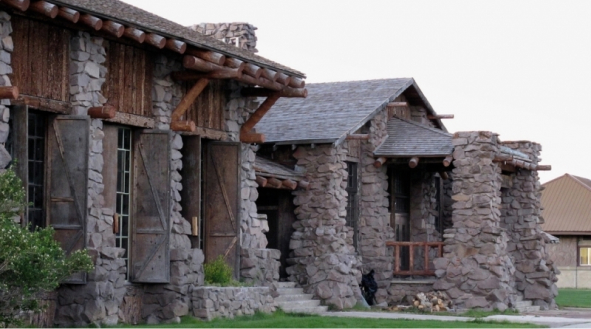Yellowstone National Park Museums & History
Established in 1872 as the first US National Park, Yellowstone National Park history fascinates millions of visitors exploring the Park's geothermal features and historic structures.
A Brief History of the Park
- 1806: John Colter, a member of the Lewis and Clark Expedition, is credited as the first non-Native American to visit this area when he joins a group of fur trappers traveling in Yellowstone Country.
- 1807: After a year of exploring, trapping, and surviving capture by unfriendly Indians, Colter makes his way back to Missouri. No one believes his adventurous stories or tales of boiling mud and steaming water rising from the ground.
- 1857: Likewise, no one believes Jim Bridger’s similar “tall tales” when he returns to the Midwest after leading an expedition through Yellowstone.
- 1871: The U.S. Geological Survey sponsors a trip to Yellowstone that includes naturalists, geologists, a landscape artist and two photographers. Shown pictures and photographs, the public finally believes the wild stories about Yellowstone.
- 1872: The U.S. Congress declares the Yellowstone area a National Park. Yellowstone is the most popular national park in the United States. It remains unique due to its stunning natural wilderness encompassing forests, lakes, and rivers, and a variety of wildlife as well as geological wonders like hot springs, geysers, and canyons.
Museums and Historical Sites worth Visiting
- Fort Yellowstone: Explore the buildings that used to house a unique group from the US Army.
- Old Faithful Inn: The unique architecture of the Old Faithful Inn captivates some visitors for hours.
- Visitor Education Center: Old Faithful is home to the most in depth exhibit in the park, featuring everything you need to know about geothermal activity.
- Yellowstone Historic Center: Just outside the park boundaries in West Yellowstone, make some time to explore the informative Yellowstone Historic Center.
History of each Park Area
Learn about the history of these areas:
Questions & Answers
Regional Museums & History
In the Spotlight
Other Museums & History Resources
The Buffalo Bill Historical Center in Cody Wyoming is a top-rated museum in the Rocky Mountain west.
Discover the Old West history of Jackson Hole, Wyoming.








